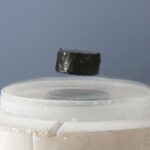Superconductivity is the ability of certain materials to conduct electrical current with no resistance and extremely low losses. This ability to carry large amounts of current can be applied to electric power devices such as motors and generators, and to electricity transmission in power lines. For example, superconductors can carry as much as 100 times the amount of electricity of ordinary copper or aluminum wires of the same size. Scientists had been intrigued with the concept of superconductivity since its discovery in the early 1900s, but the extreme low temperatures the phenomenon required was a barrier to practical and low-cost applications. This all changed in 1986, when a new class of ceramic superconductors was discovered that “superconducted” at higher temperatures. The science of high-temperature superconductivity (HTS) was born, and along with it came the prospect for an elegant technology that promises to “supercharge” the way energy is generated, delivered, and used.

Posted inBasics
Superconductivity
Suresh Kumar is a passionate mechanical engineer with deep expertise in design, thermodynamics, manufacturing, and automation. With years of experience in the industry, they simplify complex engineering principles into practical insights for students, professionals, and enthusiasts. This blog serves as a hub for exploring cutting-edge innovations, fundamental concepts, and real-world applications in mechanical engineering.
Post navigation
Previous Post
 Conduction in Ionic Materials
Conduction in Ionic Materials